GEOGRAPHY
1. INDONESIA’S SEMERU VOLCANIC ERUPTION
THE CONTEXT: The eruption of Indonesia ‘s Semeru volcano has killed at least 22 people and injured dozens.
THE EXPLANATION:
- The sudden eruption was triggered by a thunderstorm and days of heavy rains, according to the geological survey centre.
- Semeru, the tallest mountain on Java Island, threw up towers of ash and hot clouds that blanketed nearby villages in East Java province and sent people fleeing in panic.
- Semeru, more than 3,600 metres (12,000 feet) high, is one of Indonesia‘s nearly 130 active volcanoes. It erupted in January 2021, causing no casualties.
- Indonesia straddles the “Pacific Ring of Fire”, a highly seismically active zone, where different plates on the earth’s crust meet and create a large number of earthquakes and volcanoes.
- In 2010, an eruption of the Merapi volcano on Java Island killed over 350 people and displaced 400,000.
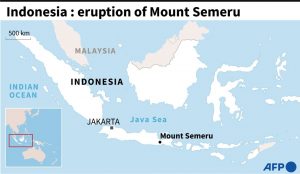
About Mount Semeru
- Mount Semeru is an active volcano in East Java, Indonesia.
- It is located in a subduction zone, where the Indo-Australian plate subducts under the Eurasia plate.
- This stratovolcano is also known as Mahameru, meaning “The Great Mountain” in Sanskrit. Semeru is named after Sumeru, the central world-mountain in Hinduism.
- Semeru’s eruptive history is extensive. Since 1818, at least 55 eruptions have been recorded (11 of which resulted in fatalities) consisting of both lava flows and pyroclastic flows.
- Semeru has been in a state of near-constant eruption from 1967 to the present.
Volcanoes are grouped into four types:
- Cinder cones.
- Composite volcanoes.
- Shield volcanoes.
- Lava volcanoes.
Stratovolcanoes
- It is called “composite volcanoes” because of their composite stratified structure built up from sequential outpourings of erupted materials.
- Unlike shield volcanoes, stratovolcanoes are characterized by a steep profile with a summit crater and periodic intervals of explosive eruptions and effusive eruptions, although some have collapsed summit craters called calderas.
- The lava flowing from stratovolcanoes typically cools and hardens before spreading far, due to high viscosity.
- The magma forming this lava is often felsic, having high-to-intermediate levels of silica (as in rhyolite, dacite, or andesite), with lesser amounts of less-viscous mafic magma.
- Two famous examples of stratovolcanoes are Krakatoa in Indonesia, known for its catastrophic eruption in 1883, and Vesuvius in Italy, whose catastrophic eruption in AD 79 buried the Roman cities of Pompeii and Herculaneum.
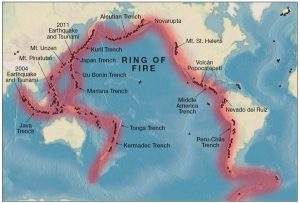
About the Ring of Fire
- Many volcanoes in the Ring of Fire were created through a process of subduction. And most of the planet’s subduction zones happen to be located in the Ring of Fire
- It is a string of at least 450 active and dormant volcanoes that form a semi-circle, or horse shoe, around the Philippine Sea plate, the Pacific Plate, Juan de Fuca and Cocos plates, and the Nazca Plate.
- There is a lot of seismic activity in the area. And, also 90 per cent of all earthquakes strike within the Ring of Fire.
Why many volcanoes in Ring of fire?
- The tectonic plates move non-stop over a layer of partly solid and partly molten rock which is called the Earth’s mantle.
- When the plates collide or move apart, for instance, the Earth moves.
- Mountains, like the Andes in South America and the Rockies in North America, as well as volcanoes have formed through the collision of tectonic plates.
THE INTERNATIONAL RELATIONS
2. THE RUSSIAN PRESIDENT VISIT TO INDIA
THE CONTEXT: Indian Prime Minister and Russian President held the 21st India-Russia summit, covering an array of areas with an aim to further enhance the special and privileged strategic partnership between the two countries.
THE EXPLANATION:
- The prime focus of the meeting was on terrorism as a common threat to both countries and the region.
- The two sides also have a shared concern of terrorism, as the security situation emanating out of Taliban-ruled Afghanistan remains challenging.
- India, however, has a historical relationship with Russia, spanning over the last seven decades. While the relationship has stagnated in some areas and atrophied in some others, the strongest pillar of the strategic partnership is of the defence basket.
- Although New Delhi has consciously diversified its new purchases from other countries, the bulk of its defence equipment is from Russia. Estimates say 60 to 70 per cent of India’s supplies are from Russia, and New Delhi needs regular and reliable supply from Russia for the spare parts from the Russian defence industry.
- At this time of tension at the border, Defence minister of India had discussed the issue of defence equipment supply and purchase of new systems — like the S-400 missile defence system — with the Russian top brass in the military and government.
THE FIRST INDIA & RUSSIA 2+2 DIALOGUE
- India now has a 2+2 format dialogue mechanism on strategic and security issues with four of its key strategic partners, Russia being the latest. The three others — Australia, the US and Japan — are also ‘Quad’ partners.
- The 2+2 dialogue is held between the foreign and defence ministers of two countries and is generally seen to be aimed at creating a mechanism under which the bilateral relationship takes a decisive strategic turn with greater integration of defence, security and intelligence apparatus.
- A 2+2 ministerial dialogue enables both sides to understand each other’s strategic sensitivities more deeply, while taking into account the political nuances of the relationship, and also enabling the building of a more strategic grouping in a rapidly changing global environment, diplomatic and strategic sources
- India and Russia signed four different pacts in the field of defence at the end of the 20th meeting of India-Russia Inter-Governmental Commission on Military & Military Technical Cooperation (IRIGC-M&MTC) on Monday, including a contract for procurement of over six lakh AK-203 assault rifles.
Defense and Security Relations
- India-Russia military-technical cooperation has evolved from a buyer-seller framework to one involving joint research, development and production of advanced defence technologies and systems
- Joint Tri-Services Exercise ‘INDRA 2021’ between India and Russia was carried out simultaneously in Volgograd, Russia in August 2021.
The joint military programmes between India and Russia include:
- BrahMos cruise missile programme.
- 5th generation fighter jet programme.
- Sukhoi Su-30MKI programme.
- Ilyushin/HAL Tactical Transport Aircraft.
- KA-226T twin-engine utility helicopters.
The military hardware purchased/leased by India from Russia includes:
- S-400 Triumf.
- Kamov Ka-226 200 to be made in India under the Make in India initiative.
- T-90S Bhishma.
- INS Vikramaditya aircraft carrier programme.
- S-400 air defence system.
Russia also plays a very important role in assisting the Indian Navy with its submarine programmes:
- Indian Navy’s first submarine, ‘Foxtrot Class’ came from Russia.
- India is dependent on Russia for its nuclear submarine programme.
- INS Vikramaditya, the sole aircraft carrier operated by India, is also Russian in origin.
- Nine of the fourteen conventional submarines operated by India are Russians.
3. THE FORMER MYANMAR PRESIDENT GETS 4 YEARS SENTENCES
THE CONTEXT: A special court in Myanmar’s capital sentenced the country’s ousted leader, Aung San Suu Kyi, to four years in prison after finding her guilty of incitement and violating coronavirus restrictions.
THE BACKGROUND:
Who is Aung San Suu Kyi?
- Aung San Suu Kyi served as the State Counsellor of Myanmar between 2016 and 2021. The post is equivalent to that of the Prime Ministerial post.
- She is the youngest daughter of Aung San. Aung San is the Father of Myanmar.
- She was called the “Children of Gandhi”.
About 8888 Uprising:
Aung San Suu Kyi became famous through 8888 uprising. The 8888 uprising is also called People Power Uprising. It includes a series of protests throughout Myanmar. It was caused by withdrawal of currency notes without compensation, police brutality, economic mismanagement, totalitarian one – party rule of Ne Win, corruption. It led to the resignation of Ne Win.
Path to power
- Ms Suu Kyi spent nearly 15 years in detention between 1989 and 2010. Her personal struggle to bring democracy to then military-ruled Myanmar (also known as Burma) – made her an international symbol of peaceful resistance in the face of oppression.
- Despite her landslide victory in 2015, the Myanmar constitution forbade her from becoming president because she has children who are foreign nationals. But Ms Suu Kyi, was widely seen as de facto leader.
- In 1991, Aung San Suu Kyi was awarded the Nobel Peace Prize, while still under house arrest, and hailed as “an outstanding example of the power of the powerless”.
Political Instability:
- On February 1, 2021, the Myanmar military has grabbed power in a coup – the third time in the nation’s history since its independence from British rule in 1948.
- Myanmar’s democratic transition had been a work in progress. The results of the 2020 election, held during the pandemic, were being seen by the NLD as a mandate for its plan of constitutional reform, through which it aimed to do away with the military’s role in politics and governance.
Why was Aung San Suu Kyi sentenced to jail?
She was sentenced to be prisoned for two charges. They are inciting the public against the military of Myanmar and for breaching COVID1-19 protocols. Currently, she is facing 11 charges that can bring a maximum imprisonment of 102 years. The other major controversial cases against her are as follows:
- Alleged use of walkie – talkies by her security guards
- Corruption in granting permits to buy a helicopter
- Violating the Official Secrets Act.
Issues Concerning India
- One important reason for the change is that India’s security relationship with the Myanmar military.
- These days, it has become extremely close, and it would be difficult to “burn bridges” with them given their assistance in securing the Northeast frontiers from insurgent groups.
- Apart from strategic concerns, India has cultivated several infrastructure and development projects with Myanmar, which it sees as the “gateway to the East” and ASEAN countries.
- These include the India-Myanmar-Thailand Trilateral Highway and the Kaladan Multi-modal transit transport network, as well as a plan for a Special Economic Zone at the Sittwe deep-water port.
THE ENVIRONMENT AND ECOLOGY
4. THE HIGHLY INVASIVE SNAIL SPOTTED IN KERALA
THE CONTEXT: Researchers of the Department of Marine Biology, Microbiology, and Biochemistry of the Cochin University of Science and Technology (CuUSAT) identified it as the acute bladder snail Physella acuta, globally branded as highly invasive.
THE EXPLANATION:
- A tiny snail with a striking, pellucid, golden-yellow shell found in the Edappally canal in Kochi has been flagged as an invasive species that could play havoc with native ecosystems.
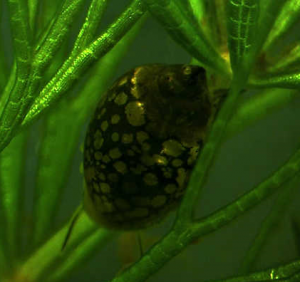
- This is the first time this snail has been reported in Kerala, according to the research team. What makes its discovery worrying is that it plays host to worms that can cause food-borne diseases and skin itches in humans. Moreover, its rapid growth rate, air-breathing capability, and tolerance to pollution makes the Physella acuta a potential competitor to native fauna.
- The team recovered 23 live specimens from the Eroor part of the Edappally canal during the biodiversity impact assessment for the Integrated Urban Regeneration and Water Transport System (IURWTS) in Kochi.
- Physella acuta is considered native to North America but is now found in all continents except Antarctica. It was first reported in India in the early 1990s. It is believed to have reached Kerala through the aquarium trade, a major vector for invasive species.
- In the Edappally canal, the snail had made its home in a highly polluted stretch plagued by high sedimentation, untreated sewage, effluents, construction waste and a thick growth of invasive aquatic weeds.
Physical Features
Small in size, the snail can grow to 16 mm in height and 9 mm in width. Physella acuta is easily identified by its sinistral (left-opening aperture) shell. Its good looks make this snail a favourite of aquariums.
How alien invasive plant s threaten Western Ghats?
- The ecological equilibrium of an ecosystem can be maintained only by balancing the floral and faunal population. But often ecosystems like shola forests, evergreen forests, grasslands, plain forests, mangrove forests and aquatic ecosystems get badly affected due to invading alien invasive alien plant species are non-native species that spread and interfere in a new ecosystem by posing a serious threat to the native biodiversity, leading to economic loss.
- Invasive species don’t allow local species to grow and wildlife to move through. A resin like substance that oozes from such alien species makes the soil acidic, preventing the growth of any other plant species. Species like Lantana, that grow extensively, create a mat-like structure leading to degradation and destruction of the biodiversity.
- As a result, herbivores like Gaur, Chital and Sambar are deprived of their food. This also affects the survival of carnivores such as tigers and panthers, interlinked to the ecological equilibrium.
- In the Western Ghats, where vast plantations of eucalyptus and wattle were raised in the past by converting grasslands and shola forests, the original habitat of the Nilgiri Tahr has been devastated. Nowadays, the Indian Bison makes frequent visits to the Kodaikanal town in Tamil Nadu because of the non-availability of food plants due to extensive plantations of alien species.
FAUNA OF THE WESTERN GHATS
- The fauna of the western Ghats includes over over 100 species of mammals, 350 species of birds, 80 species of reptiles and amphibians, 300 species of butterflies and innumerable invertebrates. 39 species of fish, 31 amphibians and 60 species of reptile’s endemic to the Western Ghats.
- Fresh water fish such as Danio neilgheriensis,Hypselobarbusdubuis and Puntius bovanicus are restricted to the Nilgiri Biosphere Reserve. The Nilgiri tahr, Nilgiri langur, slender loris, blackbuck, tiger, gaur, Indian elephant and marten are some of the animals found here.
THE INTERNAL SECURITY
5. THE NAGALAND CIVILIAN KILLINGS
THE CONTEXT: At least 15 civilians and one soldier were killed in a botched ambush and retaliatory violence in Nagaland’s Mon district, prompting the State government and the Army to order a probe into the incident.
THE EXPLANATION:
- The vehicle was allegedly fired upon by Army personnel, who were conducting an operation in the area after receiving inputs on the movement of militants of Yung Aung faction of proscribed outfit NSCN (K).
- According to the Ministry of Home Affairs, “Six out of eight people in the vehicle died. It was later found to be a case of mistaken identity. Two others who were injured were taken to the nearest health centre by the army. A Special Investigation Team (SIT) has been directed to investigate the civilian deaths and report back in a month’s time.
- Nagaland is home to India’s oldest ethnic rebellion, dating back to the 1950s. The armed movement revolves around the demand for an ethnic homeland – a sovereign territory that includes Nagaland and all Naga-habited areas of the neighbouring states of Assam, Manipur, Arunachal Pradesh as well as Myanmar.
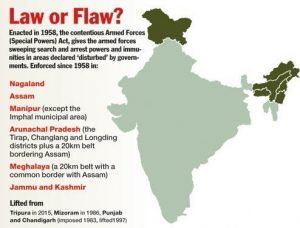
Demands to repeal AFSPA
- Anger over the incident is rising in Nagaland, where people have frequently accused security forces of wrongly targeting innocent locals in counterinsurgency operations against rebel groups under the Armed Forces Special Powers Act (AFSPA).
- Besides sweeping powers of search and arrest, the law, enforced in parts of four of the seven northeastern states as well as Indian-administered Kashmir, allows Indian forces to open fire to maintain public order in areas designated as “disturbed areas”.
- Nagaland is covered by the law as India says rebel groups operate from thick jungles of an unfenced region that also spans the neighbouring states of Manipur and Arunachal Pradesh, which border Myanmar.

What are Armed Forces Special Powers Act (AFSPA)?
How is a region declared ‘disturbed’?
- Section (3) of the AFSPA empowers the governor of the state or Union territoryto issue an official notification in The Gazette of India, following which the Centre has the authority to send in armed forces for civilian aid.
- Once declared ‘disturbed’, the region has to maintain status quo for a minimum of three months, according to The Disturbed Areas (Special Courts) Act, 1976.
Criticism of AFSPA:
- Sec 4(a) in which army can shoot to kill, as it violates article 21 which gives right to life.
- Section 4(b) search without warrants violates right to liberty and article 22.
- Dispersion of civil assembly by armed forces under section 121 violates right to assembly
- No judicial magistrate permission required while arresting –violate article 22
- Overrides CrPC.
- Violation of human rights
- It alienates the people from army and then from the rest of the India. A feeling of other worldly is generated in their mind.
What should be done?
- Create committees at district level with representatives of army, administrators and public which will report, assess and track complains in that area.
- All investigations should be time bound reasons for the delay must be communicated with the aggrieved.
- Amendments In Laws :The lacunae in the Act, as a result of definitional voids with respect to terms like “disturbed”, “dangerous” and “land forces” need to be amplified to ensure greater clarity.
- The onus of proving the alleged person as terrorists should lie with the forces. Sec 7 should be suitable amended to this effect.
THE GOVERNMENT SCHEMES/ INITIATIVES IN NEWS
6. PROJECT RE-HAB
THE CONTEXT: Khadi and Village Industries Commission (KVIC) has launched a project aimed at reducing elephant-human conflict using bees in Assam, nine months after it was initiated in Karnataka.
THE EXPLANATION:
What is Project RE – HAB?
The Project RE – HAB creates “bee fences”. The honeybees in these fences’ thwart elephant attacks in human habitations. They dissuade the elephants without harming them. It is highly cost – effective as compared to erecting fences or digging trenches. Simultaneously, it increases honey production and increases farmer income. Also, the project helps to address climate change issues by regenerating forest cover.
What is the need for the project?
Between 2014 and 2019, around 403 deaths occurred due to elephant – human conflict. 397 deaths occurred in Odisha, 349 in Jharkhand, 332 in Assam, 170 in Karnataka and 289 in Chhattisgarh. Also, around 500 elephants died in human – elephant conflict in the last five years alone.
How does the project work?

- Under the project, the bee boxes are placed in the premises of human habitation. They are placed as fences. Around 15 to 20 bee boxes are placed around the habita
tion that is to be protected. The buzz of the bees irritate the elephants the most. - They fear that the honey bees might sting them in their trunks and eyes. And therefore, they do not walk ahead of the boxes. The boxes are connected with a string. When the elephants try to pass through the string, a pull or tug causes the bees to swarm towards the elephant.
Implementing Agency
- The Project RE – HAB is implemented by the Khadi and Village Industries Commission (KVIC). The KVIC is a statutory body established under Khadi and Village Industries Commission Act, 1956.
- The main function of KVIC is to plan, promote, organize and implement programmes for the development of village industries in rural areas. It functions under the Ministry of Micro, small and Medium Enterprises.
- The Project RE – HAB is a sub mission to National Honey Mission of KVIC. It was launched to provide awareness and training in using bee boxes along the bee colonies. The mission was launched in 2017 and is in line with Sweet Revolution.
7. SWACHH BHARAT MISSION-URBAN 2.0
THE CONTEXT: Ministry of Housing and Urban Affairs (MoHUA), signed a Memorandum of Understanding (MoU) with the United Nations Development Programme (UNDP) India to strengthen the waste management sector in India under the overall ambit of Swachh Bharat Mission- Urban 2.0.
THE EXPLANATION:
- Solid waste management has been a key focus of Swachh Bharat Mission-Urban since its launch in 2014. With concerted focus on source segregation and scientific processing of municipal solid waste, the waste processing capacity in India has gone up by nearly 4 times, from 18% in 2014, to 70% on date.
- The MoU, UNDP India will also be facilitating setting up of 75 Smart Swachhata Kendras across the country, working with local partners and Urban Local Bodies (ULBs). Moreover, in line with SBM-U 2.0’s core objective of sanitation and waste workers’ welfare, the model will also focus on integrating informal waste pickers – Safai Saathis – and linking them to various government welfare schemes. With digital technologies playing a critical role in driving Mission outcomes of SBM-U 2.0, the MoHUA- UNDP model will also make use of digital enablers such as Artificial Intelligence and Machine Learning to digitize the waste flow and streamline activities in the Swachhata Kendras.
- With the vision of making cities ‘Garbage Free’, SBM-U 2.0 is focused on achieving 100% waste processing along with bio-remediation of legacy dumpsites, construction and demolition waste and plastic waste management.
- The collaboration between MoHUA and UNDP India is another step towards realizing the vision of ‘Clean Air, Clean Water, Clean Land’ in urban India through a circular economy approach based on the 3R (reduce, reuse, recycle)
Swachh Bharat Mission-Urban 2.0
- SBM-U 2.0 envisions to make all cities ‘Garbage Free’ and ensure grey and black water management in all cities other than those covered under AMRUT, make all urban local bodies as ODF+ and those with a population of less than 1 lakh as ODF++, thereby achieving the vision of safe sanitation in urban areas.
- The Mission will focus on source segregation of solid waste, utilizing the principles of 3Rs (Reduce, reuse, recycle), scientific processing of all types of municipal solid waste and remediation of legacy dumpsites for effective solid waste management.
- The outlay of SBM-U 2.0 is around 1.41 lakh crore.
AMRUT 2.0
- AMRUT 2.0 mission will prove to be a major step towards making cities self-reliant and ensuring water security.
- Under this mission, drinking water surveys will be conducted to provide better water services to the people.
- AMRUT 2.0 aims to provide 100% coverage of water supply to all households in around 4,700 urban local bodies by providing about 2.68 crore tap connections and 100% coverage of sewerage and septage in 500 AMRUT cities by providing around 2.64 crore sewer/ septage connections, which will benefit more than 10.5 crore people in urban areas.
- ‘Pey Jal Survekshan’ will be conducted to promote progressive competition among cities. The outlay of AMRUT 2.0 is around Rs. 2.87 lakh crore.
THE EXCLUSIVE PRELIMS FACTS
8. THE SIGNIFICANCE OF RAIGAD FORT
THE CONTEXT: President of India, on his four-day to Maharashtra’s Raigad Fort where he will pay tribute to Chhatrapati Shivaji Maharaj.
THE EXPLANATION:
Where is Raigad fort located?
- Raigad is a hill fort situated about 25 km from Mahad in the Raigad district and stands 2,851 feet above sea level. The British Gazette states the fort was known to early Europeans as the Gibraltar of the East.
- Its decisive feature is a mile and a half flat top which has adequate room for buildings. In its prime, the fort had 300 stone houses and a garrison of 2,000 men.
When was it built?
- The fort, which was earlier called Rairi, was the seat of the Maratha clan Shirke in the 12th century. The fort changed hands a number of times from the dynasty of Bahaminis to the Nizamshahis and then the Adilshahis. In 1956, Chhatrapati Shivaji captured it from the More’s of Javli who were under the suzerainty of the Adilshahi Sultanate.
- The fort not only helped Shivaji challenge the supremacy of the Adilshahi dynasty but also opened up the routes towards Konkan for the extension of his power.
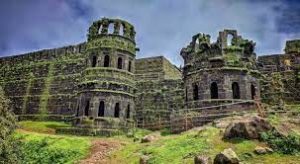
Significance of the fort in Shivaji’s life
- In 1662, Shivaji formally changed the fort’s name to Raigad and added a number of structures to it. By 1664, the fort had emerged as the seat of Shivaji’s government.
- As the Marathas under the leadership of Shivaji gained strength in their struggle against the Mughals, the announcement of a sovereign, independent state was made.
- On June 6, 1674, Shivaji was coronated at Raigad by Gagabhatt where he took on the title of Chhatrapati. Six years later, Shivaji passed away in Raigad in 1680 and cas cremated at the fort.
Importance of Raigad Fort in Maharashtra’s polity
- Chhatrapati Shivaji is the tallest and the most revered icon in Maharashtra and there is a constant attempt by political parties of all hues to appropriate his legacy.
- Due to the significance of Raigad in his life, many political leaders make it a point to visit the fort.
- Maharashtra has already announced a mid-sea memorial in the Arabian Sea for the Maratha warrior king.
- The Maharashtra Vikas Aghadi government is also seeking the World Heritage Site tag for 14 forts, including Raigad, from the era of 17th century Maratha king Chhatrapati Shivaji Maharaj on the theme of Maratha Military Architecture in Maharashtra.
THE PRELIMS PRACTICE QUESTION
Q1. Consider the following statements about CAMPA:
- It is a statutory body established under the Forest (Conservation) Act, 1980.
- It is meant to promote afforestation and regeneration activities as a way of compensating for forest land diverted to non-forest uses.
- Union Minister for Environment, Forest and Climate Change is chairperson of CAMPA.
Which of the statements given above is/are correct?
a) 1 only b) 1 and 2 only
c) 2 and 3 only d) All of them
Q2. In Which of the following states, AFSPA is not implemented at present?
a) Assam b) Nagaland
c) Manipur d) Tripura
ANSWER FOR 6TH DECEMBER, 2021 PRELIMS PRACTICE QUESTIONS
Answer: B
Explanation:
- Statement 1 is incorrect: Public Accounts Committee was first constituted in 1921 under the provisions of the Government of India Act 1919.
- Statement 2 is correct: The term of office of the members is one year.
- Statement 3 is correct: A minister cannot be elected as a member of the committee.

